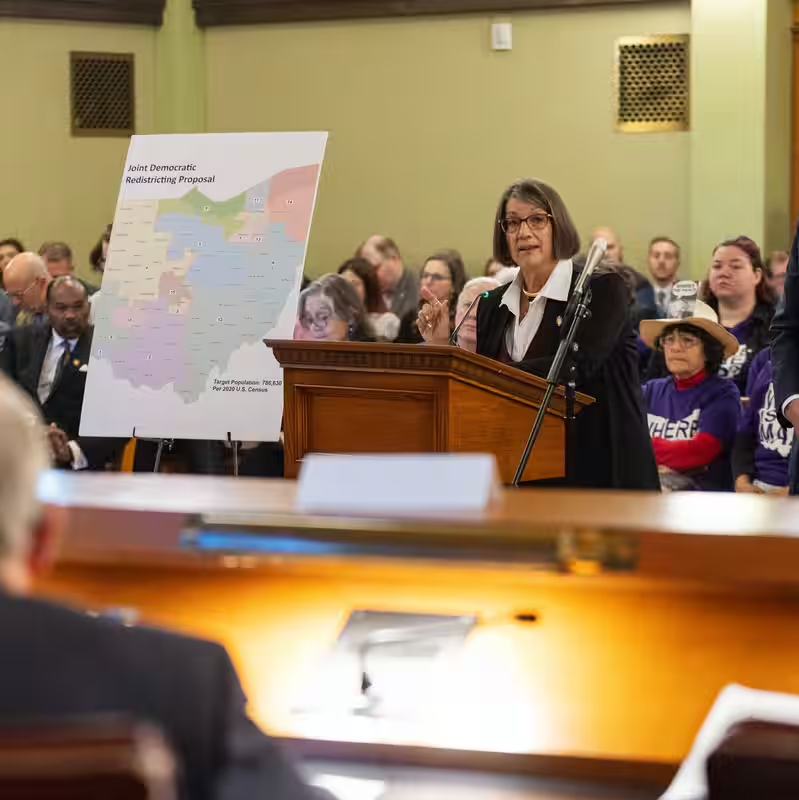Table of Contents
- Ohio’s New Congressional Map Explained
- How Republicans Stand to Gain
- Democrats’ Role in the Backroom Deal
- Public Outcry Over ‘Rigged’ Map
- What This Means for the U.S. House
- Sources
Ohio’s New Congressional Map Explained
Ohio is on the verge of adopting a new congressional redistricting map that could reshape the balance of power in Washington. The plan, expected to be formally approved Friday morning by the state’s bipartisan Redistricting Commission, tilts heavily in favor of Republicans—potentially adding two more GOP seats to the U.S. House in the 2026 midterm elections.
Currently, Republicans hold 10 of Ohio’s 15 congressional seats. Under the proposed map, that number could climb to 12, with only three districts remaining competitive or leaning Democratic. The shift comes after months of legal battles, court interventions, and public demands for fairer representation.
How Republicans Stand to Gain
The new redistricting plan redraws district boundaries to consolidate Democratic voters into fewer districts while spreading Republican-leaning voters more evenly across the remaining ones—a classic example of partisan gerrymandering, critics say.
Key changes include:
- Merging urban Democratic strongholds in Cuyahoga County into a single district
- Splitting traditionally swing areas like Mahoning and Montgomery counties to dilute Democratic turnout
- Creating two new “safe” Republican districts in central and southwestern Ohio
Analysts from the nonpartisan Cook Political Report estimate the new map gives the GOP a 70% chance of flipping two currently competitive seats—OH-01 (Cincinnati suburbs) and OH-13 (Akron-Canton corridor).
Redistricting Timeline in Ohio
| Year | Event |
|---|---|
| 2021 | Ohio voters approve constitutional amendment requiring bipartisan redistricting |
| 2022–2024 | Courts reject multiple GOP-drawn maps for violating fairness rules |
| Oct 2025 | 11th-hour deal reached between GOP and Democratic commissioners |
| Nov 1, 2025 | Final vote scheduled on new congressional map |
Democrats’ Role in the Backroom Deal
While Republicans spearheaded the effort, the map’s approval required at least one Democratic vote on the seven-member Redistricting Commission. State Senator Nickie Antonio, a Democrat and commission member, presented the final proposal during a surprise meeting Thursday afternoon.
Antonio defended the compromise as “the best achievable under the circumstances,” citing fears that without an agreement, the issue would revert to the GOP-controlled legislature—which could impose an even more extreme map.
Still, many progressive groups and voting rights advocates are furious. “This isn’t bipartisanship—it’s surrender,” said Jen Miller, executive director of the League of Women Voters of Ohio.
Public Outcry Over ‘Rigged’ Map
At Thursday’s commission meeting, more than a dozen speakers—ranging from college students to retired teachers—condemned the closed-door negotiations. “You’ve rigged the system before we even get to vote,” said one Columbus resident.
No commissioner responded to the public comments. The map was introduced and fast-tracked for a final vote just hours before the legal deadline, leaving little room for public input or legal challenge before implementation.
What This Means for the U.S. House
With Republicans holding a narrow majority in the U.S. House, every seat counts. Ohio’s potential gain of two GOP seats could provide a crucial buffer against Democratic gains in swing states like Arizona, Michigan, and Pennsylvania.
National Democrats are already warning that Ohio’s move could trigger a wave of similar gerrymandering efforts in states like North Carolina and Wisconsin ahead of 2026.
“Redistricting isn’t just about lines on a map—it’s about who gets heard in Congress,” said Rep. Marcy Kaptur (D-OH), Ohio’s longest-serving House member. “This map silences thousands of Ohioans.”
Sources
The New York Times: “Ohio Republicans Gain Ground in Push for More Seats in Congress”




